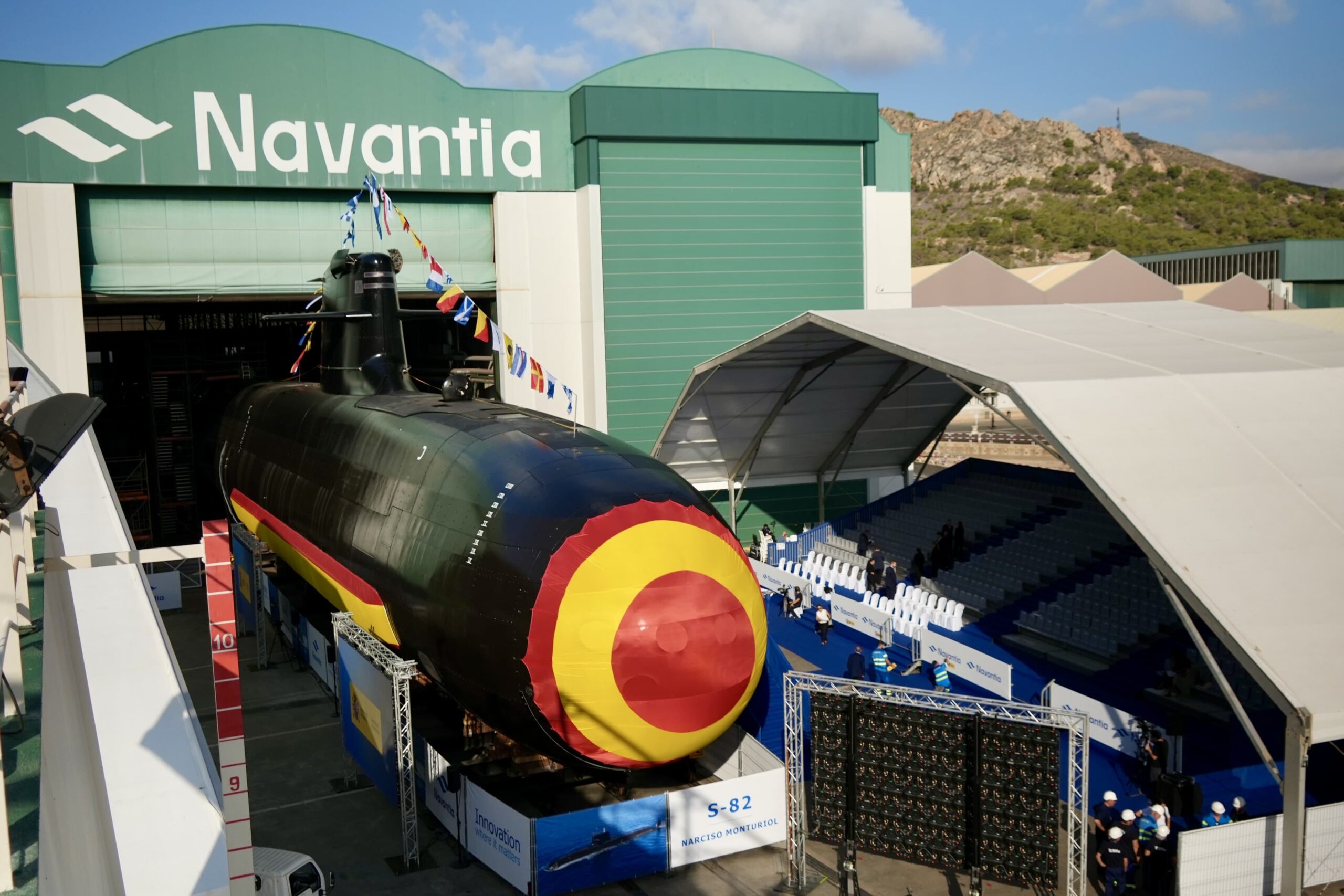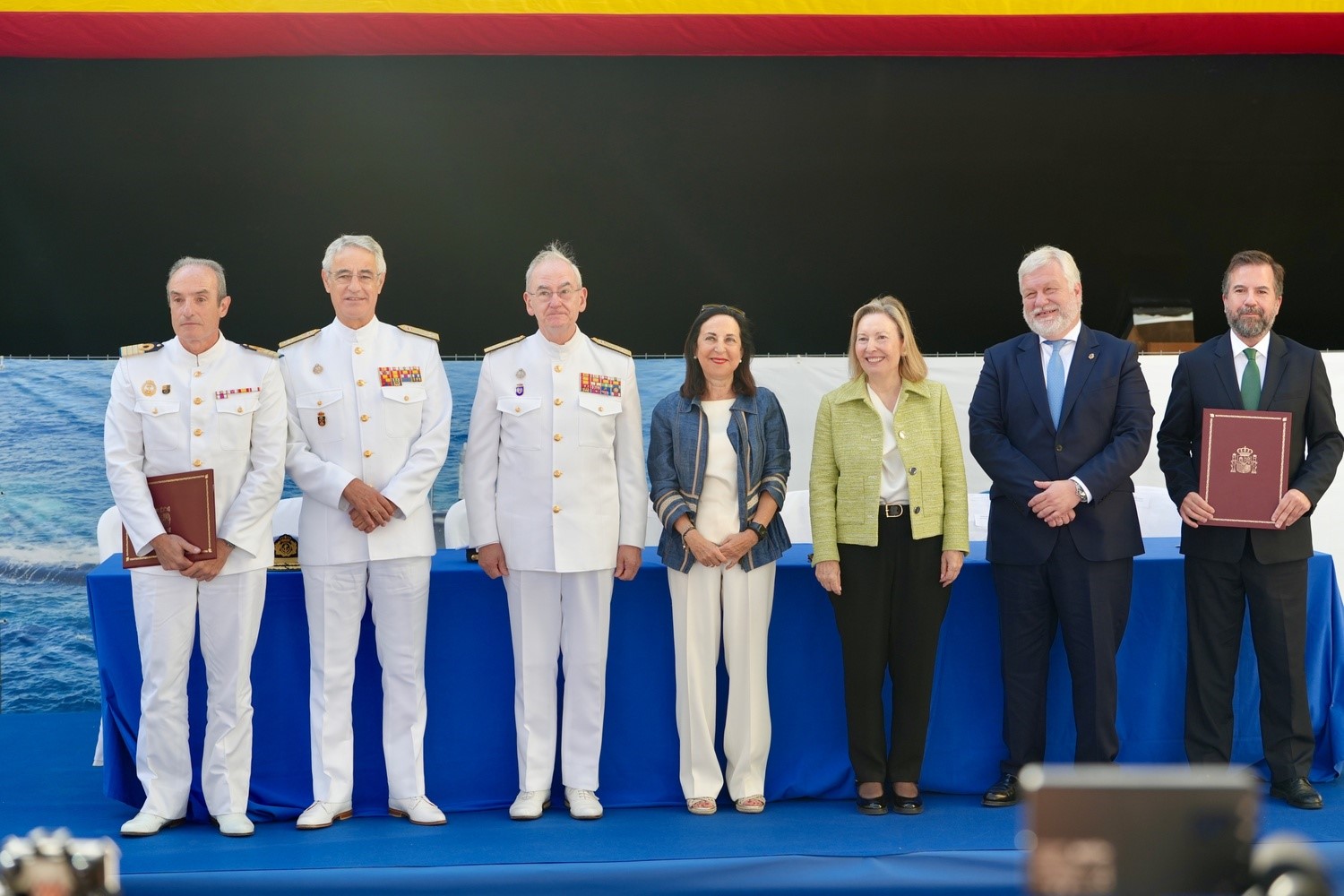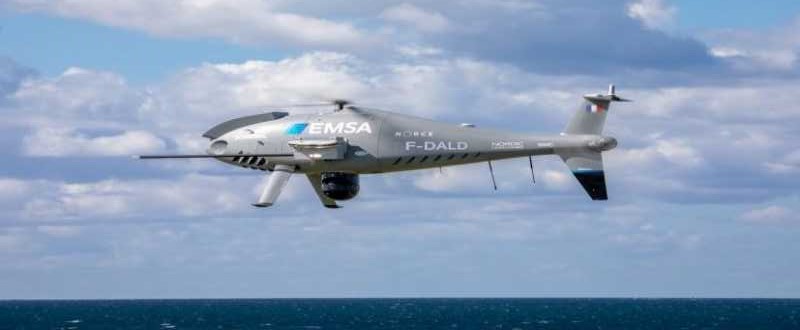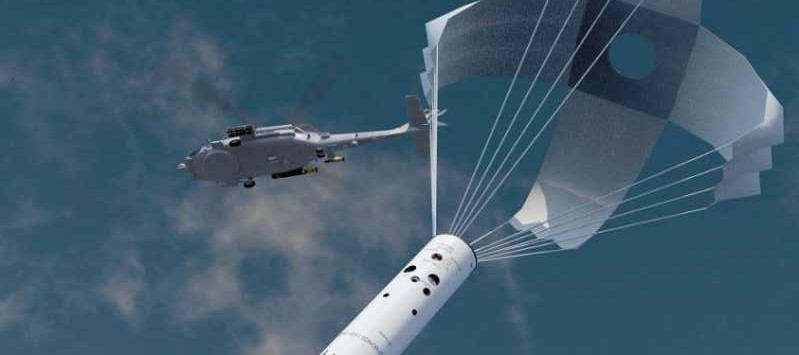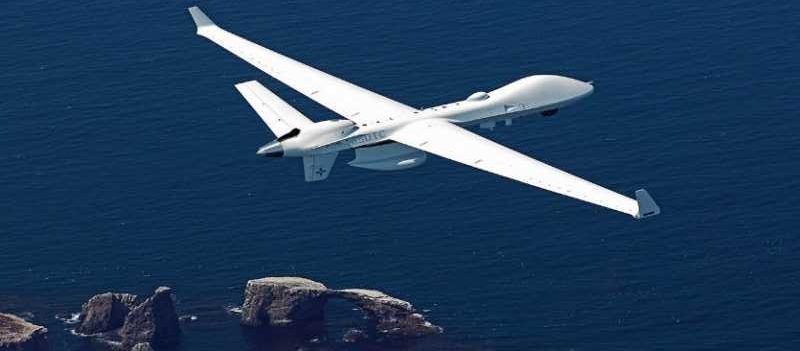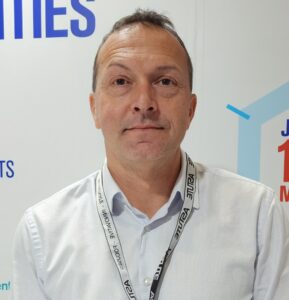Navantia’s Cartagena shipyard in Murcia hosted the naming ceremony of the S-82 Narciso Monturiol submarine, the second vessel in the S-80 series under construction for the Spanish Navy. The ceremony, presided over by Defence Minister Margarita Robles, was a solemn occasion, with Mrs. Isabel López, spouse of the Chief of Defence, Admiral Teodoro López Calderón , serving as the submarine’s sponsor.
The ceremony took place next to the facility where the final outfitting of the submarine was completed. This is the step before the vessel is placed in the water using a floating dock, a manoeuvre that takes several hours and will be carried out in the coming weeks as part of the shipyard’s operations.
The S-82 will be then ready to begin harbour trials and, subsequently, sea trials, which include surface navigation and submersion to maximum depth, thus confirming the progress of the S-80 programme, a fundamental project for Spanish defence and for its industrial and technological sovereignty.
The event was attended by the Chief of Defence, Admiral Teodoro López Calderón; Chief of Naval Staff, Admiral General Antonio Piñeiro Sánchez and, Secretary of State for Defence, Amparo Valcarce and Navantia’s Chief Operations Officer (COO), Gonzalo Mateo-Guerrero, amongst other authorities.
On behalf of Navantia, the Director of Submarine Business, Agustín Alvarez, welcomed the attendees, highlighting and thanking the work carried out by Navantia’s workers and its partner industries.
Navantia’s COO, Gonzalo Mateo-Guerrero, stated that “the S-80 programme is a direct contribution to defence, sovereignty, and the international projection of our industry. We are honoured to continue building capabilities that strengthen the security of Spain and our allies. It has industrial, strategic, commercial, and defence significance. Industrially, it drives the modernisation of processes and technologies; strategically, it provides a technological advantage, reinforcing national security and sovereignty; commercially, it opens export opportunities; and in terms of defence, it contributes to the protection of national interests”, concluded Mateo-Guerrero.
Next, the Chief of Naval Staff emphasised that “the submarine is the ultimate deterrent: discreet and lethal. Its mere presence contributes to sea control and denies the opponent freedom of manoeuvre. The Submarine Force is a capability the Navy has maintained for over a hundred years, and is now exponentially enhanced with the S-80 submarines.”
Closing the ceremony, the Minister of Defence, Margarita Robles, recalled that this programme “is the continuation of a path of success, hard work, progress, and future — aimed at strengthening our Navy, Cartagena, the Region of Murcia, and, above all, Spain”.
The ship’s sponsor and wife of the Chief of Defence Staff, Isabel López, expressed her gratitude and emotion, as well as her joy at taking part in a ceremony ‘that marks a historic milestone for Cartagena.
This submarine, second in the S-80 series of four, is named after Narciso Monturiol Estarriol, a Spanish engineer, intellectual, politician, painter, and inventor, born in Figueres (Girona) in 1819. He is recognised, along with Cosme García Sáez and Isaac Peral, as one of the pioneers of global submarine navigation.
The results of his work are collected in his posthumous work ‘Essay on the Art of Navigating Underwater,’ published in 1891. He was the inventor of the ‘Ictíneo,’ a submarine launched in Barcelona in 1859. In September of that year, he conducted a public demonstration in which the submarine remained submerged for more than two hours at 20 metres, and successfully returned to the surface.
About the S-80 programme
The S-80 submarines have an overall length of 80.8 metres, a diameter of 7.3 metres, and a submerged displacement of around 3,000 tonnes. Among their technological contributions are the combat and platform control system developed by Navantia’s Systems business unit, and a revolutionary anaerobic propulsion system, called BEST-AIP that provides great stealth while submerged.
This atmosphere-independent propulsion system allows the generation of electrical energy from fuel cells using technology derived from the aerospace sector, at any depth. Thus, they can remain submerged for weeks without surfacing to periscope depth, greatly enhancing their discretion, the main attribute of a submarine, placing the S-80 among the most advanced conventional (non-nuclear) submarines in the world.
The S-80 submarine programme generates direct, indirect, and induced employment for more than 6,000 people and has an annual impact on Spain’s GDP exceeding 250 million euros. Additionally, around one hundred partner companies participate in the programme.

